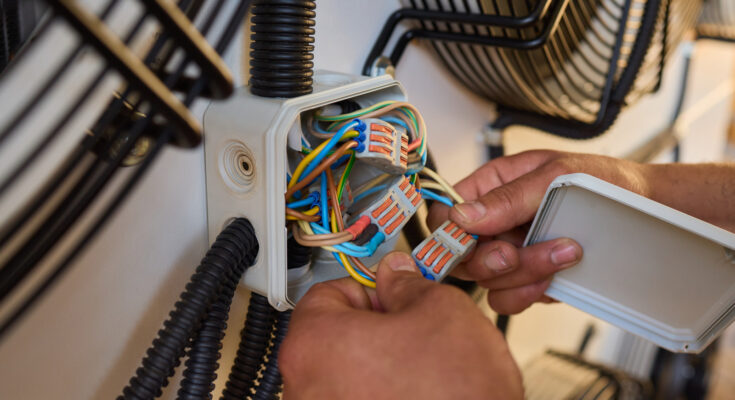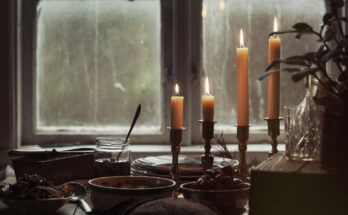What Is A Junction Box And What Does It Mean For Your Home’s Electricity?
We may receive a commission on purchases made from links.
When you think of your home’s electricity, what comes to mind? Probably light fixtures, switches, and outlets. You may even know how a GFCI receptacle protects you near bathroom sinks, or how to reset a tripped breaker. But if you aren’t an electrical expert or even an experienced DIYer, you may be less familiar with the humble junction box. According to Chris Lozano, Electrical Expert at Frontdoor, if you ever plan on tackling a project that requires cutting or splicing wires and want to stay code-compliant by minimizing the risk of overheating, it’s important to get familiar with this small protective box and understand what it means for your home’s electricity.
“A junction box is a means to contain electrical connections and pull points,” Lozano told House Digest during an exclusive interview. “The box acts as a safe place to cut and splice wires so that in the event of a failure, the damage can hopefully be contained to the junction box instead of starting a house fire.” Because spliced wires tend to be warm, which could ignite insulation or even drywall material, a junction box is often necessary when adding new light fixtures, outlets, or other electrical components. Installing one is relatively easy, but splicing requires expert knowledge. Unless you’re extremely confident in your wiring skills, this is among the electrical projects you shouldn’t attempt at home unless you’re a professional. “Homeowners can tackle installing junction boxes on their own,” Lozano said. But, he cautioned, “some installations may be more difficult than others.”
Understanding the types of junction boxes and when to use them
In his exclusive interview with House Digest, Chris Lozano said “junction boxes should be used whenever you plan on installing a device in a certain location.” Receptacles, light switches, special equipment, and light fixtures all require them, though he added a caveat, noting that some light fixtures will have a junction box already built in. Although the rules and regulations in your area may vary, many electrical installation projects require one. “It is never okay to splice wires without containing them inside of a box,” Lozano cautioned. The safety risk is simply too great. Fortunately, highly rated options like the LeMotech Water Resistant Dustproof Junction Box from Amazon are available for under $10.
“The main types of junction boxes are plastic and metal,” Lozano said. “Metal junction boxes are more common in commercial and industrial settings, and will need [to be] grounded in addition to the receptacles, lights, and any other equipment.” He explained that plastic junction boxes are more common in residential settings. Because plastic is a non-conductive material, models made of the material cannot be grounded. Once you start looking for them, you’ll likely find other types of junction boxes, from gang boxes that accommodate more than one connection to heavy-duty options designed specifically for outdoor use (like the Amazon’s Choice QILIPSU Waterproof Electrical Project Enclosure Junction Box).
Consider size and location when choosing the right junction box
According to Chris Lozano, if you’re trying to find the right junction box there are several things to keep in mind. “When choosing a junction box, it is important to consider where the box will be and what it will be doing,” he told House Digest during his exclusive interview. The electrical expert said to start by asking yourself several questions to guide your decision. “Is it inside or outside? How many wires will be in the box? Is the rest of the electrical system metal or plastic?”
Lozano suggested calling Frontdoor if you aren’t sure what size junction box will meet your needs, as “electricians can help with box fill calculation to ensure ease of organizing the wire and device inside the junction box.” Getting the size of your junction box right is important to avoid overcrowding your wires, which can cause overheating issues. It will also allow you to add or modify your connections more easily as your electrical needs change in the future.
Lastly, if you find yourself confused by the differences between junction boxes, outlet boxes, and fixture boxes, don’t overthink it. Each of these are widely available from Amazon, big box stores like Lowe’s and Home Depot, as well as your local hardware store. “There are no real differences,” Lozano told us. “They all serve the same purpose of containing electrical connections and ensuring a safe electrical installation.” Regardless of which electrical box you use, you will need to install a matching cover instead of using drywall, paneling, or other combustible materials.



